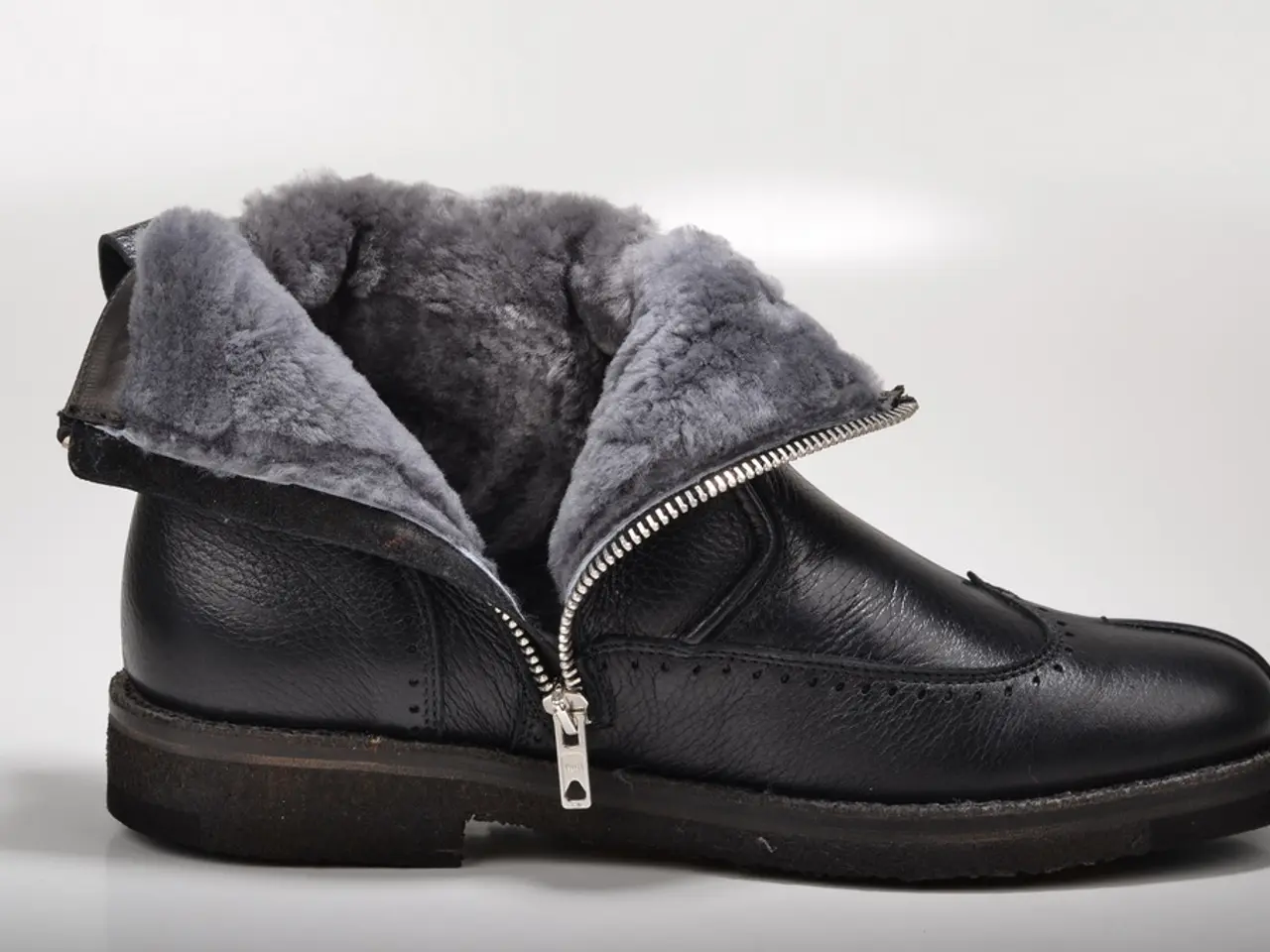Toe nail discoloration: Six possible causes identified
Black toenails can be a common occurrence, especially for those who are active or have poor-fitting shoes. However, it's essential to distinguish between harmless causes and more serious conditions, such as melanoma. Here's a guide to the common causes of black toenails and when to seek medical help.
**Trauma and Sports-Related Injuries**
Direct force or repetitive stress on the toenail, often seen in runners or athletes, can lead to blood pooling under the nail, resulting in discoloration ranging from maroon to black. Typically, this is associated with a history of trauma or sports activity.
**Melanonychia**
This is a benign pigmentation condition that can cause dark streaks or nail discoloration due to melanin deposition. Unlike trauma, melanonychia does not require a history of injury.
**Fungal Infections (Onychomycosis)**
Fungal growth in moist environments, such as communal showers or poorly cleaned nail salons, can cause thickened, brittle nails that may be yellow or brown, though less commonly black.
**Melanoma**
Melanoma, a serious skin cancer, can appear in the nail bed and cause a new or changing dark streak under the nail without a history of injury. Unlike the other causes, melanoma does not typically present with pain or swelling unless advanced.
## Differentiation Steps
1. **Medical History**: Determine if there was any recent trauma or exposure to moist environments. 2. **Physical Examination**: Look for signs of trauma, fungal infection, or other systemic conditions. 3. **Diagnostic Tests**: Biopsy for suspected melanoma, and nail clippings for fungal infections. 4. **Expert Consultation**: Consult a dermatologist or healthcare professional for proper diagnosis and treatment.
Several medical conditions, including diabetes, kidney disease, heart disease, and anemia, can cause black toenails. A person with underlying conditions such as diabetes will need treatment for the condition before the black toenail can be addressed.
Pigmentation changes over time can affect the skin under the toenails, causing dark patches to develop in people with darker skin. Blunt force injuries can also lead to black toenails, resulting from broken blood vessels in the nail bed that cause blood to pool.
Melanoma, the most aggressive form of skin cancer, can rarely cause a black toenail, with dark, irregular-looking skin developing beneath the nail bed. If a black toenail is sudden, unexplainable, or does not heal with time and at-home treatments, it's essential to contact a doctor.
Black toenails usually do not cause additional problems when treated correctly, but fungal infections can spread if left untreated. In cases of blunt force injury, a doctor may make a small hole in the nail to allow blood to drain. For more severe cases with infections, a doctor may prescribe additional medication. Fungal infections can be treated at home with creams and ointments, but if they persist, a doctor should be consulted.
- Dermatitis, a chronic skin condition, can sometimes be associated with poor footwear, causing discomfort and potential darkening of the toenails.
- Predictive science can help in identifying the possibility of skin conditions like melanoma, which often require immediate medical attention.
- Depression, a mental health issue, can sometimes exhibit physical symptoms like poor self-care, leading to fungal infections of nails.
- Health-and-wellness routines, including fitness-and-exercise and skin-care, can help maintain the overall health of the toenails, reducing the risk of fungal infections.
- Therapies-and-treatments for conditions like atopic dermatitis or bipolar disorder might involve medications, some of which could have side effects affecting the skin or nails.
- Nutrition plays a vital role in maintaining healthy skin and nails, as deficiencies in certain nutrients like Vitamin B12 could lead to changes in skin-conditions.
- CBD, a compound derived from cannabis, is sometimes used in skin-care products for its potential benefits, such as reducing inflammation and promoting healing of fungal infections.
- Chronic diseases, such as HIV, can cause changes in the immune system, making it harder for the body to fight off fungal infections in nails.
- The use of gloves and footwear that covers the toes can help prevent injuries and subsequent black toenails, especially for those with conditions like diabetes, which can slow healing.
- Melanoma, a type of cancer, can sometimes present as a black, irregular streak underneath the toenail, necessitating urgent medical attention.
- Regular check-ups and consultations with healthcare professionals, including dermatologists, can help in early detection and treatment of various medical-conditions and chronic-diseases affecting the skin, nails, and mental health.




